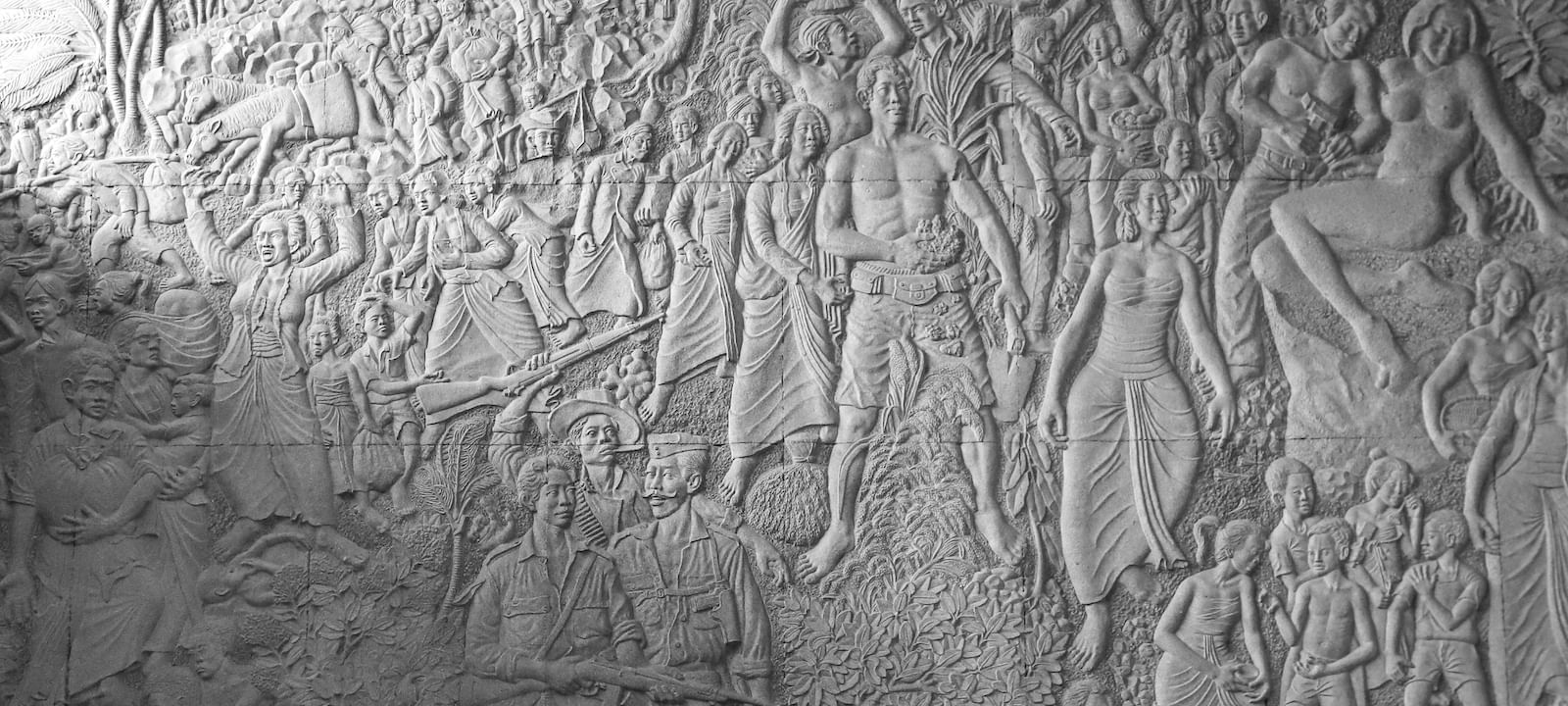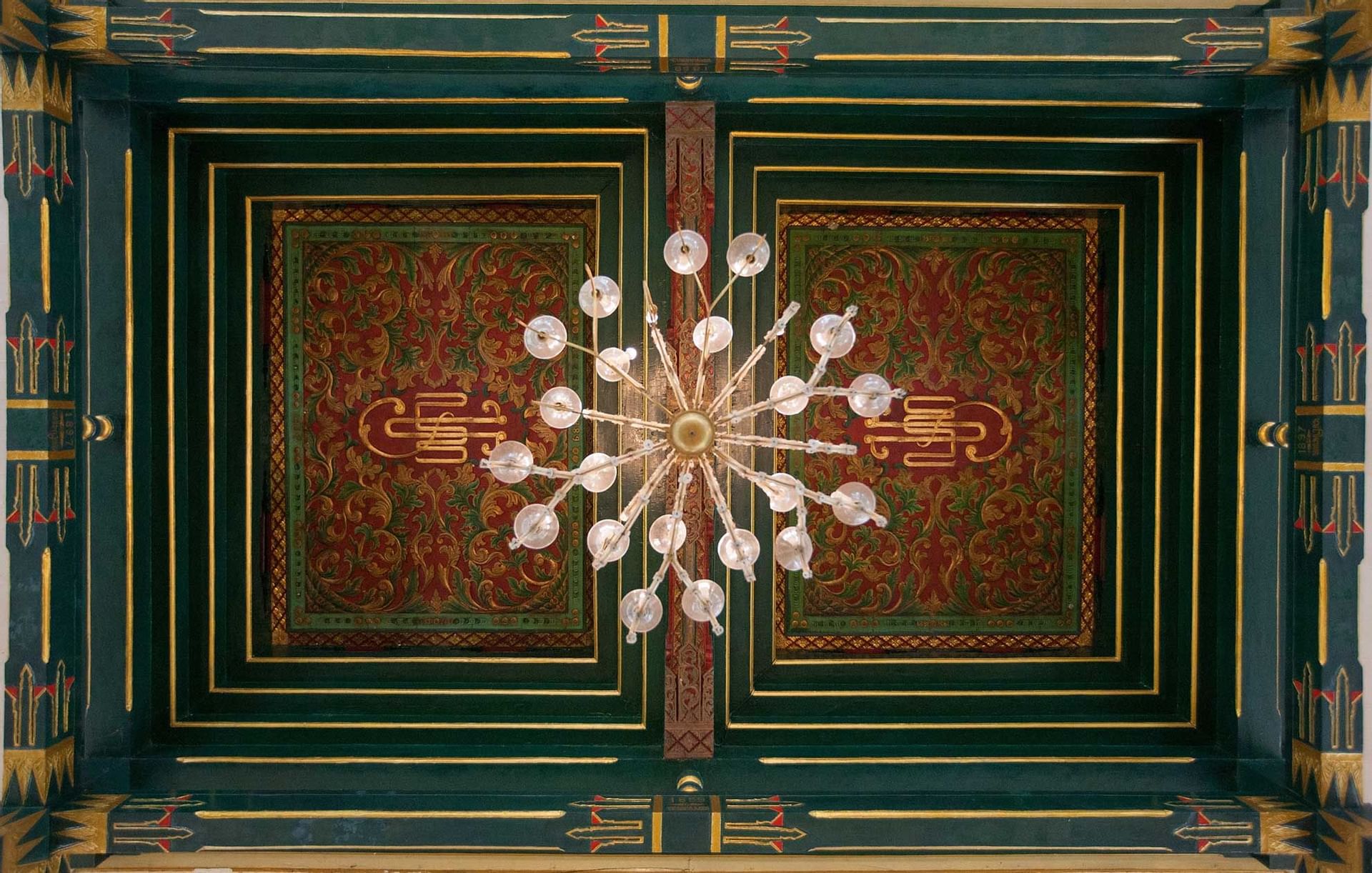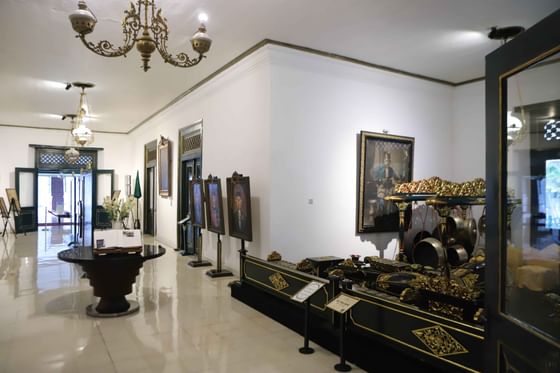History
As the former Royal Palace Residence and the witness of Indonesia's independence day era, Royal Ambarrukmo Yogyakarta is a living heritage hotel, showcasing an extraordinary collection of authentic Javanese architectural masterpieces from 18th century and artworks from the 1964s; all are well maintain at the hotel complex until today.

Pendopo Agung Kedaton Ambarrukmo
According to the Ancient Heritage Conservation Center of Yogyakarta, Kedhaton Ambarrukmo complex consists of seven areas; namely Pendopo Agung, Ndalem Ageng, Bale Kambang, Gandhok, Pacaosan and Alun-Alun.
Kedhaton Ambarrukmo was built based on strong Javanese traditions. Each part of the whole complex has a different function and conveys certain philosophical meaning and also prayers representing the religious values, beliefs and norms of Javanese culture.
Pendopo Agung is a semi-outdoor building without walls to symbolize the openness of the King to all of his people. The floor is higher than the yard to reflect appreciation to all guests and intimacy with harmony.
Since the construction in 1857 by Sultan Hamengku Buwono VI, the Pendopo Agung has not changed in terms of its shape but its width. Its basic shape is 'Joglo Sinom' with size 32 x 32,4 meters, heading south.
Its roof is supported by total 36 pillars of three kinds; 4 Saka Guru (main pillars), 12 Saka Penanggap (sub-main pillars) and 20 Saka Penitih (outer and supporter pillars). All the pillars are decorated with fretworks like 'Wajikan', 'Saton', 'Tlacapan', 'Mirong' and 'Praba' - each placed on 'umpak' (stone base) engraved with Arabic calligraphy.

Relief at The Lobby
UNTUNG RUGI DI LERENG MERAPI
Andesite rock with pour cement relief, in size of 700 x 1.500 cm
by Harijadi Sumadidjaja and members of Sanggar Selabinangun (1964 - 1965)
Starting in 1964 for about six months, Harijadi Sumadidjaja and members of Sanggar Selabinangun were commissioned by President Soekarno to work on various aesthetic elements of Ambarrukmo Palace Hotel (today known as Royal Ambarrukmo Yogyakarta) and a selected few large hotels in Indonesia - Hotel Indonesia, Samudera Beach Hotel and Bali Beach Hotel.
In the relief, life on the slopes of Merapi Volcano is well shown. Merapi Volcano stands tall on the top, at the lower part of the relief many activities done in the fields and around the house are depicted; there is a crafter, blacksmith, sculptor and even batik artist, as well as some women and children bathing in the river. Some revolution fighters were watching the situation alertly with other children playing cheerfully. The whole scene was the representation of the peaceful life surrounding the Merapi Volcano.
A small poem written on the bottom left of this andesite rock relief reads:
"Meskipun sekeras batu, lunak juga terbawa nyata. Arus revolusi jang menjala, menudju bahagia."
Dipersembahkan kepada: Bung Karno seniman adiluhung jang menjediakan lapangan luas. Lebar bagi seniman pedjoeang, untuk mentjurahkan bhaktinya.
English translation - "As hard as a rock, as soft as reality. The flaming stream of revolution, towards happiness."
Presented to: Bung Karno (popular nickname of President Soekarno), the honorable artist, who provided us this gigantic field. A field for the national warrior artists to fight for honor.

Mozaik at The 8th Floor
KEHIDUPAN MASYARAKAT DI YOGYAKARTA
Ceramic tiles mosaic, in size of 600 x 2,000 cm
by J. Soedhiono and team (1964 - 1965)
A hand-made piece-by-piece mosaic by J. Soedhiono and team at the 8th floor space, made of more than 15 different color shades between the years of 1964 - 1965.
Depicting the story about life in Yogyakarta, the mosaic was completed in more or less four months. Visually telling about a Batik painting lady, Jamoo sellers, Borobudur in the distance, the Royal Palace and its Gunungan tradition, the traditional costume for a wedding couple, national hero Pangeran Diponegoro, Pandawa Lima shadow puppet, life in the market and traditional dance.
The mosaic that is placed at the lobby “Kehidupan Masyarakat di Jawa Tengah” and this one, are used to affirm the fact that the different societies of Central Java and Yogyakarta lived in the two regions and had a distinctively peaceful life. It also represented the existence of Ambarrukmo that shaded the two provinces.
Ndalem Ageng
In the north side of Pendopo Agung, there is Ndalem Ageng.
A limasan-type building facing south with a typical Javanese exterior look, but the layout and interior influenced by European style. The rooms at Ndalem Ageng are all symmetrical and the building has strong walls made of concrete while the wood part is on the north and south side, named Pringgitan (the shadow puppet space) and Gadri (the dining room).
In the inside of the higher positioned and sacred Ndalem Ageng, there are three main parts; two on the east are ‘Senthong Kiwa’ for male members of the family, two on the west are ‘Senthong Tengen’ for female members, while in between called ‘Senthong Tengah/Krobongan’ for heirloom weapons room and to worship the Goddess Sri - with each access to the inside of the building and also to the side-yard.
Between Pendopo Agung and Ndalem Ageng is called Paretan, a passage once used by the Royal horse carriage of the King to standby.
When Sultan Hamengku Buwono VII living in Kedhaton Ambarrukmo after his abdication, he occupied the bedroom in the south-east part until he passed away in December 30th, 1921. Until today, the chamber remains private and is considered as the most sacred part of the complex.
Located between the shopping mall and the hotel, Museum Ambarrukmo occupies the main building of Royal Residence, right behind the majestic Pendopo. It was inaugurated on 28 May 2013 by Sri Sultan HamengkuBuwono X, the Governor as well as the King of Yogyakarta Kingdom. In the early part of the 19th century, it served as the official residence of the Late Sri Sultan HamengkuBuwono VII, soon after he abdicated his crown.
As the Royal Residence, it has several big rooms that are utilized as exhibition spaces to showcase some of the Indonesian Cultural Legacy. In addition, it has been proclaimed and inscribed as a Masterpiece of Intangible Heritage of Humanity by UNESCO: Keris, Batik and Wayang.






